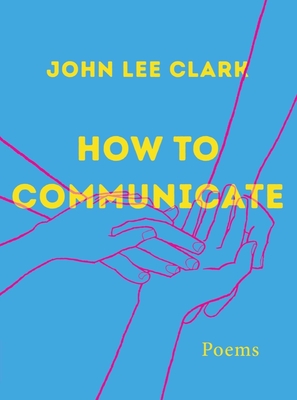“To write and create are not the same thing”: Writers@Grinnell welcomes John Lee Clark

Photo from W. W. Norton & Company
Clark’s debut poetry collection (pictured) was published in 2022.
March 7, 2023
This past Tuesday, Writers@ Grinnell welcomed John Lee Clark to share his 2022 book of poems “How to Communicate,” which, like many of his works, takes inspiration from his life as a DeafBlind writer. Clark is not only an award-winning poet, essayist and translator, but he is also a leader in the world of protactile, a touch-based language created by and for DeafBlind people. Protactile originated in 2007 as a means for DeafBlind people to interact directly with each other instead of through interpreters, as most preexisting sign languages relied largely on visual cues.
During the Writers@Grinnell event, Clark was seated with two interpreters, Hal Anderson and Ahyicodae (Iko), who vocally translated the writer’s communication from protactile. The three, along with Sejal Sutaria, assistant professor of English, and various crowd volunteers, formed what Clark described as a “cluster.” An American Sign Language interpreter, Julia Lyttle, also accompanied the reading.
The concept of a “cluster” holds an important place in protactile communication because of the reciprocity and necessary physical closeness of participants — while protactile does not lend itself to large group communication, a small group can communicate in protactile if they are able to initiate shared physicalcontact with such a cluster.
Within this format, Clark took what he called a “hybrid” approach to the reading. In addition to sharing his work through interpreters, he brought and shared objects important to his life and mentioned in his poetry. These included a braille slate, the hospital anklets worn by his twin sons after their premature birth and artwork by a DeafBlind artist. These objects were passed between audience members to touch and explore, echoing Clark’s experience of perceiving the world through his hands.
In an email to the S&B, Clark described how he got into writing. He wrote that it is a long story “involving many threads that somehow converged, looped around my hands and made them write.” One of these threads was the gradual deterioration of his vision as he was born deaf but became blind as an adolescent. Clark wrote that as he had to find books with larger fonts from bargain tables and used bookstores, he began consuming a “more eclectic platter” of literaryworks, including poetry.
“There are not many contemporary DeafBlind writers, so my task is a more challenging one — breaking new ground, creating. To write and create are not the same thing,” Clark said.
Two of Clark’s other works include the 2008 chapbook of poems “Suddenly Slow” and the 2014 essay collection “Where I Stand: On the Signing Community and My DeafBlind Experience.”
“For poetry, it was harder to push back on the canon and make room for poems that truly spoke to my identity and life experience,” he wrote in comparison to his experience with essay-writing. “In many marginalized literatures, the essay, or nonfiction in general, is the first to really speak up and to refuse to cater.”
However, as he focused on works from “How to Communicate” for the reading, Clark was able to speak to his experience as a DeafBlind person through poetry with striking passion and clarity. He described the collection as “an experience! It’s a journey that transverses multiple formal poetic terrains,” with six distinct sections. “It all has to do with my life, my community and several languages, including ASL and Protactile,” he wrote.
Clark explained that protactile falls into a larger movement of individuals discovering how to do everything in their own ways as members of the DeafBlind community, as opposed to following sighted and hearing norms. He wrote that the language exemplifies “what it’s like to build rather than trying to enter something already established.” According to Clark, the importance of creating DeafBlind spaces lies in the fact that “it is giving exactly who we are, ourselves, permission to be exactly who we are and to do what makes sense and feels good to us.”
This tactile system relies on touching another person’s body and uses taps, presses, slides, squeezes, brushings and more, with the receiver’s hand following along with the hand of the one communicating. Clark opens the invitation to anyone, “DeafBlind and hearing-sighted alike,” to learn, join and be in protactile spaces.
Audience members of the Writers@Grinnell event stomped their feet to create vibrations in place of clapping or performing the hand- waving known as “silent applause” in ASL. Many stayed after the reading to meet with Clark as he signed books.
As for giving a message to disabled members of the Grinnell community, Clark wrote, “Try to figure out what you don’t yet know. There are many forces that conspire to make sure you don’t know how stressful it is to pass, to perform, to follow norms. Forces that don’t want you to know you actually can do things very differently

















































